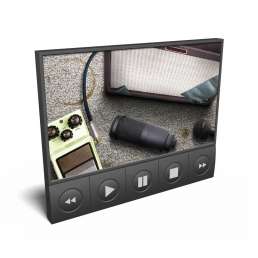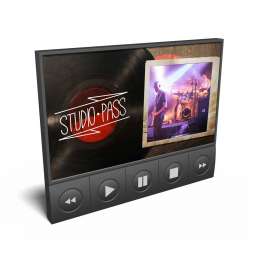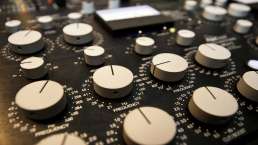Thanks to modern technology, almost anyone can produce their music at home – even with a low-budget homerecording setup. However, mixing all the recorded instrument-tracks of a song is a complex process that requires a lot of practice and experience. But what exactly is done when mixing a song and what are the challenges?
Mixing is the process where all the recorded and edited tracks are fit into a stereo or 5.1 canvas. Therefor, techniques like panning, leveling, equalization, compression and reverberation are used to fully utilize this limited space and shape the record to your liking. With proper mixing skills a good record can be transformed into an outstanding one or the overall vibe can be changed from, for example, ultra-dry 70’s funk to a “swimming in reverb” sound of the 80’s. It’s alos a highly creative process where your imagination is the only limitation. Of course, the process varies from sound engineer to sound engineer but everyone usually uses similar techniques and procedures.
A logical first step is to get an idea of which instruments were recorded, how the volumes of these instruments can be adjusted and how they can be distributed in the panorama. By doing that, you’ll end up with a rough mix that should deliver the initial idea and the basic emotions of the song. If you’ve recorded all the tracks yourself, you’ll probably have done the whole leveling and panning thing already during the recording sessions.
After that, the unwanted frequency components can be removed with high- and low-pass filters. This makes sense, for example, for drum overheads where your want to remove the low frequency components of the kick drum. Likewise, you can cut out the lows of high-gain guitars to make room for the bass. Filtering is no must but can be an effective way to free up space for the different instruments in the frequency spectrum without even touching an equalizer.
Equalizers are already the next keyword. With an equalizer you can remove or reduce unwanted frequencies or free up even more space in the frequency spectrum for the various instruments. Equalizers are among the primary mixing tools of every sound engineer but in the wrong hands they can do more harm than good. Therefor, be aware that it takes time and experience to really master them.
In addition to equalizers, compressors are the most commonly used mixing tool by sound engineers. They can be used to reduce or limit the dynamic range of a signal, thereby making quiter signal components more audible.
Another popular effect is saturation. In short, saturation occurs when certain electronic circuits or tapes are operated outside their technical specifications. They are thereby not able to fully process the signal and therefor begin to distort. Depending on the circuit or tape that gets used, this distortion adds certain overtones to the signal which can, in the best case, sound pleasant to the ear and add weight or color.
Two other important effects are reverb and delay. If no room tracks have been recorded alongside the instrument tracks these two effects can be used to emulate the impression of depth in a stereo mix. How you use these effects is always a matter of taste and depends on your mixing style. However, if you use them the right way you can put your recordings in a whole new light.
Of course, there are a lot of other tools and mixing techniques that would go far beyond the scope of this article but if you’re interested in the topic, you’ll find books, videos, and online services that will help you understand these advanced techniques in more detail.
To sum it up, mixing music can be great fun once you’ve mastered the basics. The biggest challenge in mixing, however, is to train your hearing to listen for all the fine details you need to notice in oder to get a remarkable mix. As you can imagine, that does not happen overnight. So take your time and practice – a lot!
If you have other questions about homerecording feel free to browse through all my homerecording posts.
Header image: Mike Pfaffenhuemer
Relevant products
Similar posts
Things you should know before recording in a studio
Even nowadays, one of the main goals of many bands is to record their music in a professional…
What is a pre-production and do I need it for my record?
The pre-production is the one part in music production that many musicians do not know much about.…
What is audio editing and is it really necessary?
You've carefully recorded all your instruments with the best possible audio quality and you've put…
What is mastering and do I really need to master my tracks?
Nowadays songs get mixed on headphones, music is consumed via cellphone speakers but also played on…
Music production history – The 5 most important eras
Music production history and the path to our modern way of recording is characterized by many…
The 4 main music production disciplines explained
For people who are getting started with music, production terms like mixing, mastering, recording,…














